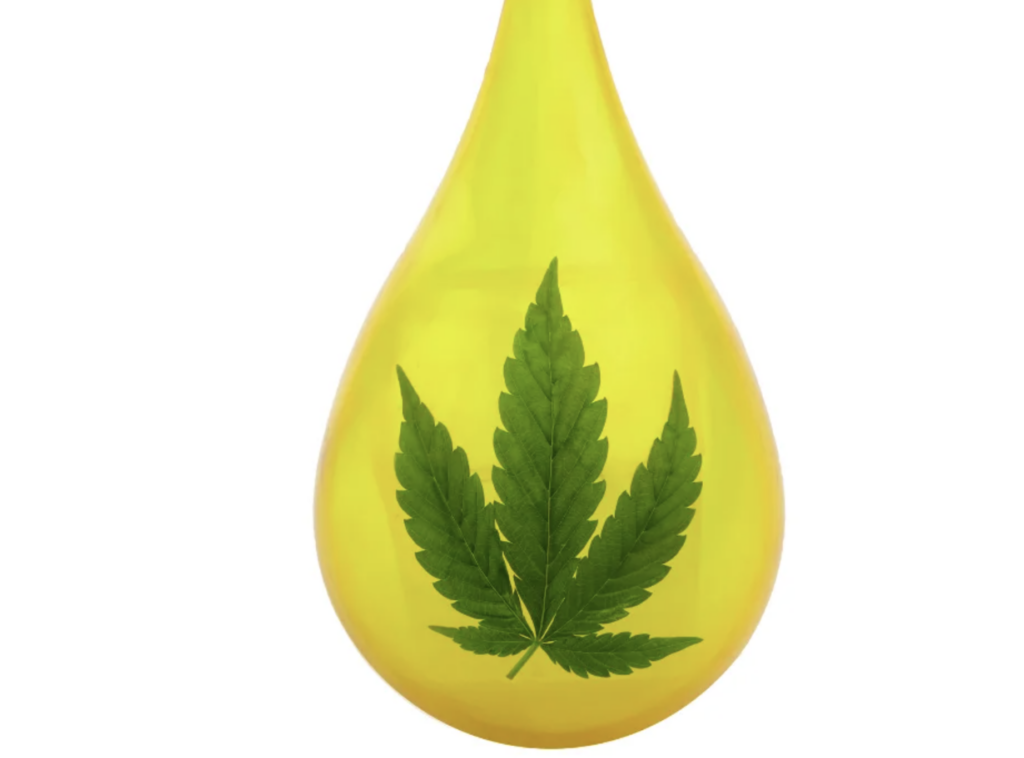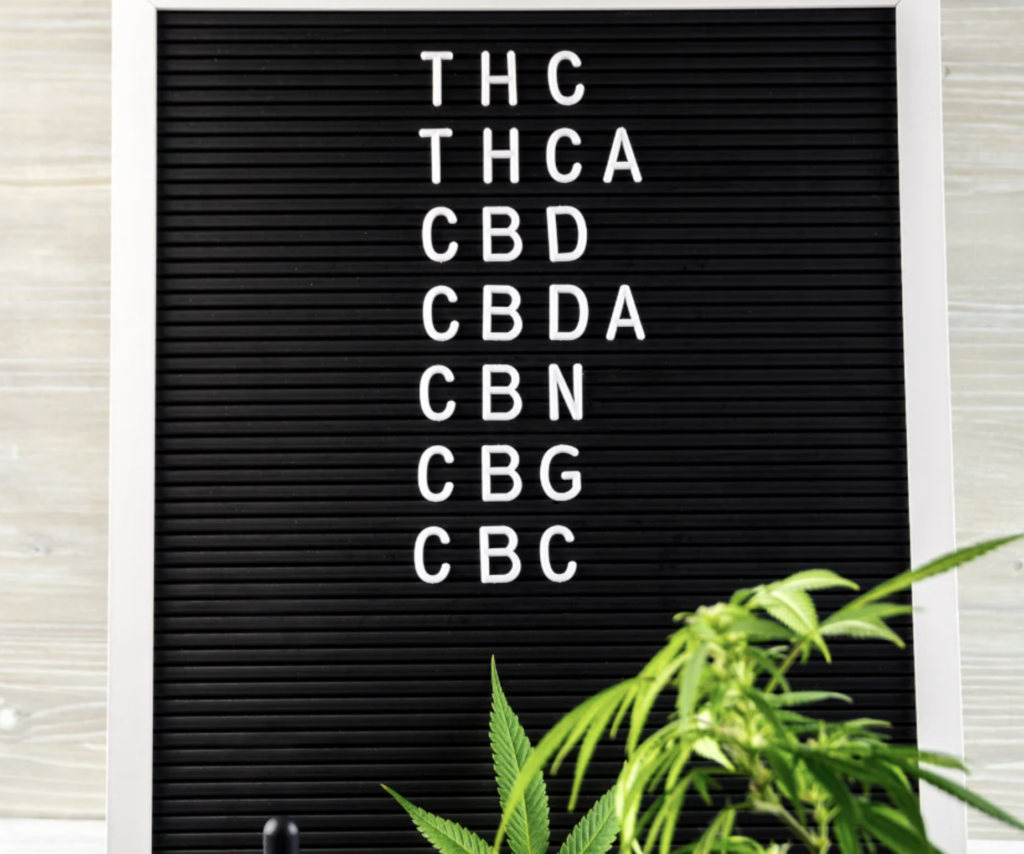
Cannabis would just be another plant if it weren’t for cannabinoids. Cannabinoids are part of what gives cannabis its kick. The other part is terpenes. Terpenes play an important role in the effectiveness of how cannabinoids affect someone. That’s because terpenes work with the endocannabinoid system and cannabinoid receptors located throughout the body. They help influence the absorption rate of cannabinoids. Basically, they play a role in determining how much or how little certain cannabinoids are absorbed by cannabinoid receptors.
In essence, cannabinoids like THC interact with cannabinoid receptors, triggering many different reactions. Reactions include increased appetite, inflammation reduction, arousal, and more. This is all made possible thanks to cannabinoid interaction with cannabinoid receptors that are part of the endocannabinoid system.
Naturally occurring phytocannabinoids like THC are found in abundance in the cannabis plant. There are hundreds of different cannabinoids, though science and research only know details on about a dozen or so. Very little information is known about the lesser-known cannabinoids.
Cannabinoids can be isolated or separated from one another. Many people prefer them to be together so they can have the opportunity to experience the entourage effect. Of the hundreds of cannabinoids in cannabis, here are a few of the most popular ones and the effects they carry that we know of.
· Delta-9-Tetrahydrocannabinol (THC) is the most popular cannabinoid known in cannabis. That is because all research points to Delta 9 THC being largely in part responsible for the intoxicating or psychoactive effects experienced when consuming cannabis. Delta 9 THC is known to help pain and inflammation, appetite stimulation, and more.
· Cannabidiol (CBD) is runner-up if not as equally as popular these days as THC. CBD does not produce the same intoxicating effects that THC does. Consumers report receiving the same benefits as they would get with THC, minus the high or buzz. CBD is shown to help reduce pain, and inflammation, promote healthy bone growth, and more.
· Cannabichromene (CBC) is a cannabinoid that works with receptors in the body that are part of the ECS but also has the unique ability to interact with receptors that are not part of the ECS. Research shows this cannabinoid holds strong anti-inflammatory and pain-relieving effects. Some research believes that CBC could even be stronger than many opioid medications.
· Cannabigerol (CBG) is a very unique cannabinoid. Research suggests that CBG is the building block for other cannabinoids. CBG is believed to work by binding with both CB1 and CB2 receptors where it helps enhance the production of anandamide, aka the bliss molecule. Research suggests this cannabinoid helps with pain and inflammation, regulates sleep and appetite, and enhances motivation and pleasure.
· Cannabinol (CBN) is a cannabinoid that occurs more commonly in older cannabis that has been cultivated, cured, and stored longer as it occurs when THC begins to break down. Research has shown CBN to have sedative-like and anti-inflammatory properties.
· Tetrahydrocannabivarin (THCV) is a cannabinoid that many people refer to as diet weed. THC has a legendary reputation for spiking the appetite causing consumers to experience a major case of the munchies and for making people sleepy. THCV does the exact opposite. It’s said to curb the appetite while offering energy-boosting properties at the same time. THCV is found in higher concentrations when it is juiced using fresh cannabis.
These are only a small handful of the cannabinoids found in cannabis. These cannabinoids are supplementing the dependency many people have grown to have with over-the-counter and prescription drugs. Even those looking to kick drug addiction are finding cannabis to be extremely beneficial in helping aid this process. Countless people will testify that cannabis helps them through opioid and heroin withdrawals.

Cannabinoids Help Different People with Different Things
People of all ages and walks of life can benefit from cannabis. Professional and amateur athletes, actors, actresses, and celebrities are finding beneficial uses for cannabis, ranging from helping with pain management to helping manage symptoms associated with stress, depression, anxiety, and more. There are children that benefit from cannabis like Gavin Ragsdale, Dom Merrow, and the now-grown Coltyn Turner (who coined the phrase “I’d rather be illegally alive than legally dead”) and many others like them.
Cannabis helps people in their twenties with everything from concentration and management of pain, anxiety, and depression. It is also helping to keep them away from more dangerous substances like alcohol or street drugs. Middle-aged individuals and seniors love cannabis too. As the body grows older and that check engine light comes on, cannabis can be your friend. Prescription medications come with unwanted and unpleasant side effects such as headaches, dizziness, tiredness, constipation, and more.
Cannabis helps with all kinds of medical conditions. Cancer, fibromyalgia, epilepsy, Crohn’s disease, Alzheimer’s disease, Huntington’s disease, seizure disorders, epilepsy, chronic pain, PTSD, diabetes, and a wide array of other medical conditions fall under qualifying conditions to become a medical cannabis patient. These conditions are listed as qualifying conditions because cannabis can potentially help manage and control symptoms associated with these diseases.
People turn to cannabis every day to help them control the symptoms of chronic pain, arthritis, nausea, loss of appetite, migraine headaches, inflammation, menstrual cramps, PTSD, stress, depression, anxiety, and more. This has led the legal cannabis industry to become a $33 billion dollar industry in 2022, up by 32% from 2021. It is expected to continue to grow and cultivate more sales achieving an estimated value of around 52 billion dollars by as soon as 2026. In many places, medical cannabis patients pay less tax, have access to purchasing more cannabis at one time, and do not have age restrictions. In the not too distant future, many people are hopeful that insurance will pick up cannabis expenses for medical cannabis patients. Having a med card also gives you access to purchasing cannabis in other states that offer reciprocity or temporary med cards. If your state has a legal medical cannabis program in place and you believe you have one or more of the qualifying conditions necessary to receive a valid state-issued medical cannabis card, it’s time to make an appointment with an MMJ doctor today so you can experience how cannabis might help you enjoy a higher quality of life.
Disclaimer: The information, including but not limited to, text, graphics, images and other material contained in this article is for informational purposes only. No material from this article is intended to be a substitute for professional medical advice, diagnosis, or treatment. Always seek the advice of your physician or other qualified health care provider with any questions you may have regarding a medical condition or treatment before undertaking a new health care regimen. Never disregard professional medical advice or delay in seeking it because of something you have read on this website.
